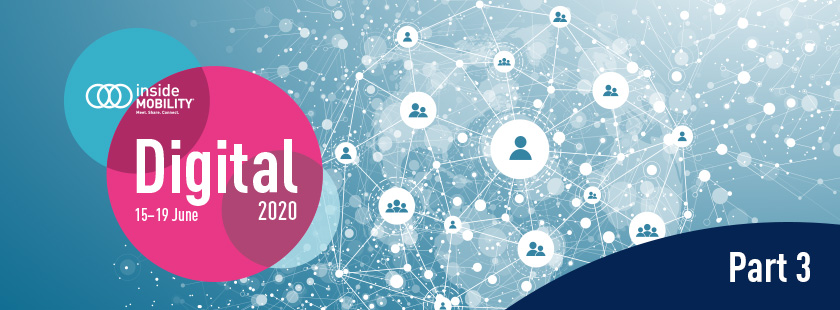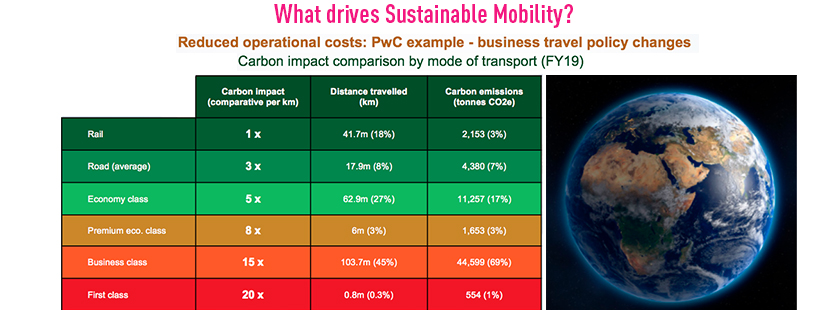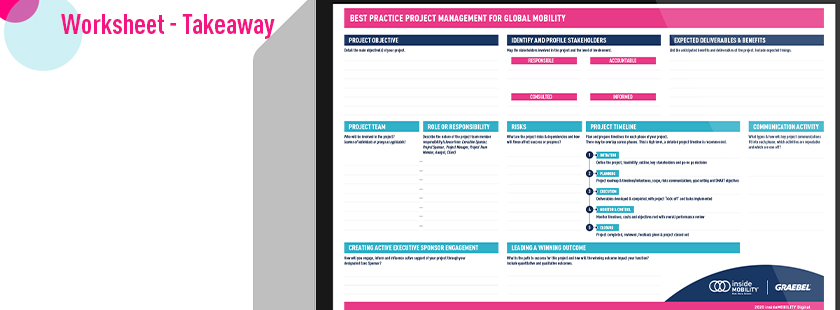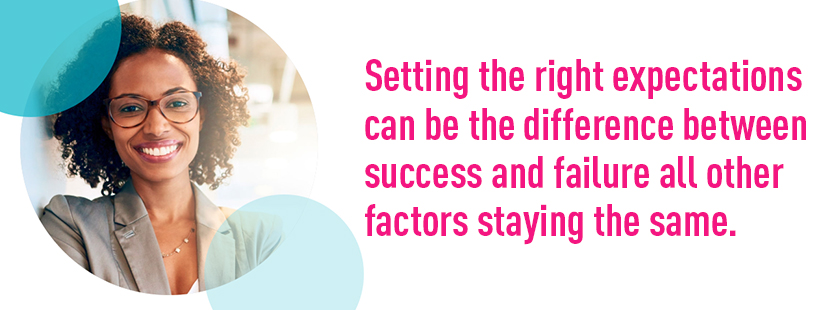Sharing Insights, Shaping Debate at insideMOBILITY Digital (3 of 3)

Sustainability in mobility – today and beyond
As sustainability continues to rise up the corporate agenda, what are the implications for the mobility function? To answer this question, Alan Johnson from PwC kicked off day three of insideMOBILITY Digital with a session on sustainability in global mobility.
Setting the scene, Johnson explained how COVID-19 has accelerated engagement with the issue of sustainable mobility. Indeed, with so many people forced to work from home during lockdown, COVID-19 has heightened awareness of the environmental impacts of globalized business and travel. And in a quick live poll, 43% of attendees confirmed they were planning to change their mobility policies as a result of the pandemic.
As more and more businesses commit to carbon neutrality, pressure is increasing on mobility to meet sustainability requirements in RFPs, and to help clients achieve net zero targets. In the post-COVID world, explained Johnson, this is likely to lead to a decline in long-term assignee populations. “And while mobility may re-establish itself,” said Johnson, “it’s likely to be in different forms, for example through project-based and virtual workers.”
Looking ahead, companies will need to elevate their duty of care to mobile employees through improved health, safety and wellbeing. They will also have to focus on operational and environmental costs, carefully selecting assignees’ mode and class of transport. Not only is business class travel expensive, its carbon impact is 15 times greater than standard rail! At the same time, remote working, virtual assignments, and digital meetings will never replicate the rich human experience and relationships achieved through face-to-face interaction. Something mobility functions will need to consider as they plan for the ‘new normal’.

Best practice project management
Next up, Graebel’s Beverly King introduced the subject of project management in global mobility – a discipline for which there is seldom any formal training or education available. So, how can we do more with less and make project management more efficient within the mobility function?
One of the biggest challenges in this area, said King, is the absence of the right tools to manage projects, which can lead to unclear objectives and conflicting information. To counter this, project managers need to establish expected deliverables and outcomes, while also focusing on people – the project team, relevant stakeholders, and executive sponsors to help make the right decisions. It is also important, explained King, to think about the resources you need, which involves understanding:
- Project timelines and milestones
- Risk and dependencies
- Planned communications and financials
Before the session split into breakouts, a live poll revealed that 45% of attendees found a lack of time to be the most challenging aspect of mobility project management. Once in discussion, attendees observed that the absence of stakeholder buy-in was another major showstopper. Without support, said one participant, projects just tread water. On this subject, another contributor suggested using data to get stakeholders to sit up and take note. Indeed, leveraging data to shape narratives around project requirements emerged as a key theme and recommendation. All participants received a one-page Graebel framework designed to help facilitate mobility project management skills and approaches. Get your copy of the framework by joining the insideMOBILITY Slack Community.

Contemporary crisis management
Day four of insideMOBILITY Digital opened with a timely peer-to-peer session on crisis management. With events such as COVID-19 and terrorism testing global mobility like never before, participants were able to hear about action plans and best practice from two leading industry practitioners.
Mobility as a function has come to the forefront in 2020 – a year of pressure, change and the unexpected for companies around the world. Simone Flesch from Lufthansa AG described how no previous global event, including erupting volcanoes, 9/11, and SARS, has come close to the present pandemic in terms of impact to the airline industry. Enhancing measures applied to past crises, Flesch said Lufthansa had to conduct a swift analysis of its dispersed global teams. The important thing, she said, was “to stay calm and not overreact”; to retain sophisticated levels of decision-making and resist employing “quick fixes too fast”. Flexibility, she added, was key, with interrupted assignments requiring reassessment of rules, regulations and social security impacts.
Next, Natalia Silveira from global IT consultancy ThoughtWorks explained how, with clients hit hard, and without an emergency plan in place, her company had to leverage its strength and agility. As they saw the pandemic unfold, the mobility team “proactively positioned [itself] at the core of the crisis management” response, creating a cross-functional travel advice team to support the business. By making channels between regions and global functions more consistent, Silveira and her team helped to build company-wide resilience and support, which proved critical in the months that followed. And in the absence of a centralized tracking system, increased regional autonomy enabled quick decisions to be made to ensure cost containment and people safety.
Educating line managers and setting expectations
In the final session of insideMOBILITY Digital, participants discussed how best to educate line managers – which, as Graebel’s Katrin Razzano pointed out, “is a real challenge in mobility”. Setting the right expectations, said Razzano, can be the difference between success and failure, while line managers, if properly educated, can become “the first line of defence” and “key strategic partners”.

Dispersed into breakouts, attendees considered how to avoid unnecessary escalations and distractions in line manager engagement. Good relationships and communication, said one participant, are essential. By touring regions, meeting line managers in person, and proactively addressing mobility issues they are facing, mobility functions can begin to achieve greater visibility. You have to work hard to get a seat at the table and stay there, said another, recommending regular attendance of business operations meetings, briefings and town halls, and proactive information sharing.
Attendees agreed that demonstration of value is mobility’s ticket to line manager engagement. And in many cases, this is best achieved by ‘showing the problem’ and ‘sharing the consequences’. By illustrating the potential impact of an issue to a company, mobility can gain traction and buy-in with line managers, shifting perceptions of mobility from administrative resource to core value-creating function.
The conversation continues
Before, during and after insideMOBILITY Digital, delegates were encouraged to meet, share and connect via Graebel’s dedicated online Slack forum. Bringing like-minded people together, this forum continues to host engaging conversation and views on the topics covered during the week-long event and beyond. Join us on Slack to keep up to date with upcoming insideMOBILITY events. Submit your request to join here.